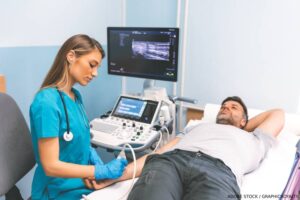Collecting PROMs around function is a national quality measure for RA, lupus and psoriatic arthritis, according to Dr. Yazdany.
“PROMs are validated tools, typically surveys, used to capture patients’ perceptions of their health, such as QOL, functional status or pain,” says Dr. Yazdany. “They are a key tool for centering clinic visits and care around the patient’s personal experience and to ensuring that this experience is prioritized when discussing management.”
Patient Experience
“Although some aspects of what is covered in PROMs can be obtained from the history, PROMs are powerful in that they standardize collecting information about the patient’s experience, can be tracked longitudinally in a quantitative way and reflect state-of-the-art science in terms of soliciting information about symptoms,” Dr. Yazdany says.
 In RA, lupus and other rheumatic diseases, functional status PROMs are significant predictors of “how the patient is doing and their prognosis,” Dr. Yazdany says, noting that PROMs indicate “responsiveness to improvements in inflammatory disease activity, but they also capture the patient’s experience of illness, which may be influenced by other factors, including depression, poor sleep or noninflammatory pain.”
In RA, lupus and other rheumatic diseases, functional status PROMs are significant predictors of “how the patient is doing and their prognosis,” Dr. Yazdany says, noting that PROMs indicate “responsiveness to improvements in inflammatory disease activity, but they also capture the patient’s experience of illness, which may be influenced by other factors, including depression, poor sleep or noninflammatory pain.”
In treating the whole patient, she notes, “It is important to understand fluctuations in PROMs over time and to investigate the underlying causes to help patients improve their function.”
“PROMs help us gain a more detailed, patient-centered understanding of the patient’s experience of their illness, as well as their trajectory,” Dr. Yazdany says. “Importantly, in qualitative studies, patients tell us that they love when their doctor discusses PROM results with them and when they can track their progress through PROMs over time.”
Capturing Data
A 2024 study by Dr. Bartels, Dr. Yazdany and others found that integrating PROs into electronic health records (EHRs) presented a challenge for U.S. rheumatology practices.3 The researchers interviewed 38 participants, identifying gaps in the collection of RA outcome measures. The findings helped develop the ACR’s RA Measures Toolkit, an online resource intended to improve workflow efficiency and patient care.
“Collecting the data for PROs can be a challenge, but capturing PROs can be as simple as short questions or paper questionnaires during clinic check-in or via patient portals or tablets before or during clinic visits,” Dr. Bartels explains.
In 2024, Dr. Yazdany et al. reviewed whether artificial intelligence (AI) could improve clinical decision making in RA.4 The authors suggested that large language models could enhance RA treatment by reducing the clinician workload when interacting with the EHR.


